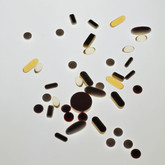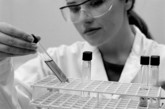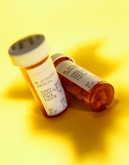Biosimilars
Interchangeability or substitution of biosimilars
The interchangeability or substitution of biosimilars is a subject that differs somewhat between Europe and the US. These different approaches to biosimilars are discussed by Dr Mark McCamish and Dr Gillian Woollett in their published paper [1].
Interchangeability of biosimilars in the US
As drug manufacturers await guidance on a biosimilar approval pathway in the US, the debate goes on as to how high the bar will be set for the FDA to designate a biosimilar as interchangeable. In one critical area of the law that outlines biosimilar regulations, Congress outlines the difference between biosimilarity and interchangeability with respect to biosimilars and innovative biologicals, but the FDA has yet to define the difference.
Etanercept and quality attributes changes
Quality changes in commercially available etanercept (Enbrel) were found by Sandoz researchers over a period of time. Since the drug remained on the market with an unchanged label, this would indicate that the changes were accepted by the health authorities [1].
Regulatory approach to biosimilar development
Legislation in Europe in 2004 created a legal pathway for approval of biosimilars and the first biosimilar, Omnitrope (somatropin) as approved by the EMA in 2006. The US is lagging behind somewhat, having only just approved a legal pathway in March 2010 and with practical guidance from the FDA still anticipated.
Quality attribute changes for rituximab
Last updated: 4 April 2013
Sandoz researchers found quality changes in commercially available rituximab (Rituxan/Mabthera) over a period of time. Since the drug remained on the market with an unchanged label, this would indicate that the changes were accepted by the health authorities.
Questions over US biosimilars pathway in light of Teva’s BLA
Questions have arisen over whether the abbreviated pathway for approval of biosimilars in the US will ever be used. Many believe that biosimilars manufacturers will opt out of this pathway and use the normal route via a Biologic License Application (BLA). This is backed up by the fact that Teva’s biosimilar, Neutroval, was submitted to the FDA via the normal BLA route.
TNF copy biological approved in China
China-based Simcere Pharmaceutical Group (Simcere) announced on 9 May 2011 that Shanghai Celgen Bio-Pharmaceutical (Shanghai Celgen) has received approval for Qiangke – a copy biological version of etanercept – by the Chinese authorities.
Comparability for biosimilar development
How does ‘comparability’ apply to biosimilar drug development? This was the question discussed by Dr Mark McCamish and Dr Gillian Woollett [1].
Biosimilars user fees as high as brand-name fees
On 9 May 2011, the FDA proposed a user fee programme that would see drugmakers seeking approval to market biosimilars in the US initially paying fees similar to those required of originator biological drug developers.
Changes in the quality attributes of darbepoetin alfa
Quality changes over a period of time were found in commercially available darbepoetin alfa (Aranesp) by Sandoz researchers. Since the drug remained on the market with an unchanged label, this would indicate that the changes were accepted by the health authorities [1].













